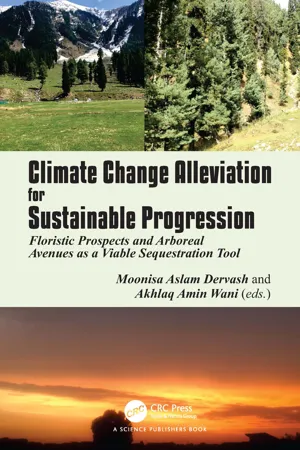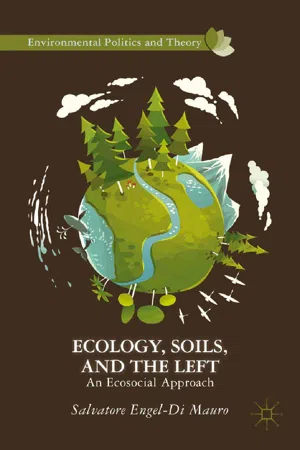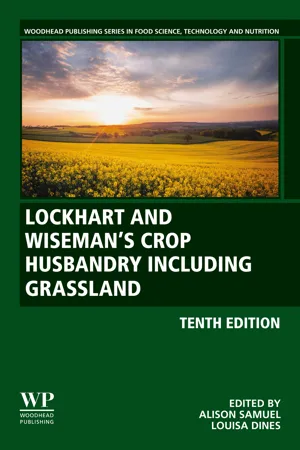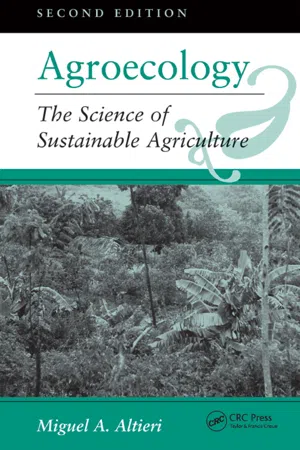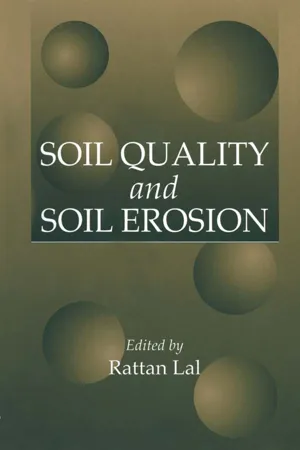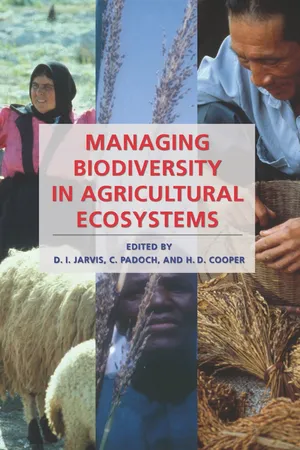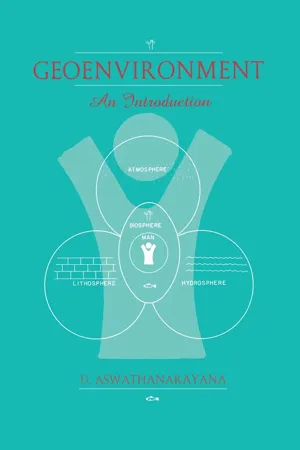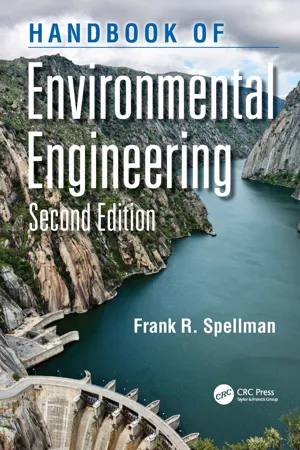Geography
Soil Quality
Soil quality refers to the ability of soil to perform its functions, including supporting plant growth, regulating water flow, and providing habitat for organisms. It is determined by factors such as texture, structure, nutrient content, and pH levels. Assessing soil quality is important for understanding its suitability for agriculture, conservation, and other land uses.
Written by Perlego with AI-assistance
Related key terms
10 Key excerpts on "Soil Quality"
- eBook - ePub
Climate Change Alleviation for Sustainable Progression
Floristic Prospects and Arboreal Avenues as a Viable Sequestration Tool
- Moonisa Aslam Dervash, Akhlaq Amin Wani, Moonisa Aslam Dervash, Akhlaq Amin Wani(Authors)
- 2022(Publication Date)
- CRC Press(Publisher)
et al., 1995;Lehman et al., 2015) as it more precisely expresses the concept that soil is a dynamic living system (Doran et al., 1996;Lehman et al., 2015). Contrarily, majority of the soil scientists provisionally approve the term ‘Soil Quality' because of its emphasis on quantitative soil characteristics and the quantitative relationships between the characteristics and diverse soil functions (Romig et al., 1995;Lehman et al., 2015). In a direct and simplistic approach, Soil Quality is the capacity of the soil to function (Karlen et al., 1997) and soil health is ‘the continued capacity of soil to function as a vital living system, within ecosystem and land use boundaries, to sustain biological productivity, maintain the quality of air and water environments, and promote plant, animal, and human health' (Doran et al., 1996). In a nutshell, soil health is used to refer to ‘the condition of the soil as a result of its management and Soil Quality may refer to both permanent soil properties and soil condition' (Brady and Weil, 2007 ). Soil Quality indicators are the quantifiable soil characteristics which impact the potential of the soil to produce crops or environmental functions. The characteristics which are highly sensitive to management are preferred as indicators. In any agro-ecological region, the quantifiable characteristics which are considerably influenced by global change are organic matter, soil depth, aggregation, respiration, texture, infiltration, bulk density, availability of nutrients and retention capacity (Arshad and Martin, 2002 ;Barros et al., 2007). Soil health describes various functions and ecosystem services which are provided by the soil. The most important of these are sustaining biomass production, providing habitat for biota, elemental cycling and biomass transformation and moderating environment. Hence, soil health/Soil Quality is evaluated by recognising and measuring a number of crucial characteristics (Fig. 1a and Fig. 1b - eBook - ePub
Ecology, Soils, and the Left
An Ecosocial Approach
- Kenneth A. Loparo(Author)
- 2014(Publication Date)
- Palgrave Macmillan(Publisher)
(Karlen et al. 1997, 4)Finally, Lal et al. (2004, 18) view it more succinctly as “determined by the interrelationships among soil properties, soil type, land use and management,” where apparently land use and management simply happen and require no further analysis.10Regardless of the respective weaknesses of these definitions of Soil Quality, they contrast one another in ways that suggest a progressive admission that humans are the ultimate protagonist in this pedological play. It is not just any biological productivity, but productivity that also promotes human health, and then finally the needs associated with habitation, as if it could be independent of human health. Even the spatial aspect is specified, so that it becomes evident that places have some sort of extent (boundaries). Eventually, it is made evident that it is all relative to a combination of decisions over what to use soils for and what the soils themselves are like.There are many problems with these views on Soil Quality and they largely stem from subsuming political questions under external biophysical processes. There is no relational understanding (high Soil Quality for one species can be poor Soil Quality for another), no discussion of the social context of Soil Quality knowledge production, no consideration for the possibility of contradictions between human species-specific needs (or even those of other species) and overall biomass productivity, no explication about what count as legitimate uses of soil (who is to decide on land use and management, for instance), no regard for conflicting soil uses, and no recognition of boundaries as socially constructed rather than given. - Alison Samuel, Louisa Dines, Steve Finch, Gerry P. Lane(Authors)
- 2022(Publication Date)
- Woodhead Publishing(Publisher)
It is a range of physical, biological and chemical factors that integrate together to affect soil health and functions. Describing and defining soil health is easier than establishing criteria that decide on whether a soil is healthy or not as currently there are no set widely accepted indicators and levels related to its measurement and recording. Much research and collaboration is taking place in this area of work investigating the value of key soil physical, biological and chemical properties and use of field and laboratory soil tests and techniques. Using these allows ways of monitoring soil health that can be translated into guides or toolkits for farmers, growers and other soil managers e.g., use of score cards or a traffic light system that records whether a soil health indicator is in a good status or otherwise. Examples of soil properties that are being used in this research include:- • physical - soil structure, aggregate stability, bulk density, levels of compaction.
- • biological - quantity of soil organic matter and its speciation (total, active, stable), earthworm populations, microarthropod populations, microbial biomass respiration and carbon fluxes, microbial DNA profiling.
- • chemical - pH, macronutrients, micronutrients.
Soil Quality is another term which is also being increasingly used and is essentially synonymous to soil health as a measure and aim. Optimal soil health is associated with soil functionality that is broad-ranging and that balances key outcomes from soil processes. Plant, animal and human health, environmental quality and protection and productivity are all soil assets that should not be considered individually in isolation. All of these functions are influenced by the farmer and affected by land use and management. Good soil management aims to improve soil health or quality using a multi-functional approach and the farmer needs to consider agricultural productivity alongside other important soil benefits and outcomes. It is important to note that as soils are highly variable in make-up that soil health indicators must be able to be reliably interpreted in relation to such diversity.3.1.2. Soil characteristics
Soil is finite, considered as non-renewable and is able to be both improved and degraded. Good management is essential to maximise its benefits and functions and reduce the amount that is lost or damaged, for example through erosion of valuable soil material or compaction affecting drainage, aeration, rooting and biological activity. Soil can become much more difficult to manage if the amount of organic matter within it is reduced.- eBook - ePub
Agroecology
The Science Of Sustainable Agriculture, Second Edition
- Miguel A Altieri(Author)
- 2018(Publication Date)
- CRC Press(Publisher)
Table 17.1 ). Soils used for agriculture inherit many properties from the natural state. Some of these properties, such as soil texture (the percent of sand, silt, and clay size particles present) and depth to a layer that restricts root growth, can be modified only at such great expense as to make it impractical in most situations. However, almost all of a soil properties are influenced to one degree or another by how the soil is managed and the choice of crops to be grown. Even if the texture is not changed, the droughtiness of a sandy soil or the cloddiness of a clay soil is under a degree of control by human activities.TABLE 17.1 Characterizing Soil Quality.*PHYSICAL CHEMICAL BIOLOGICAL Water-holding Nutrient availability Soil organic matter capacity Electrical conductivity Soil microbial biomass Infiltration rate (salinity), sodium, pH Respiration/biomass (q CO2 )Soil depth, horizons Toxicities (toxic elements, pesticides, organics) Mineralizable (labile) N labile organic C (0.5–2 mm) Soil texture Soil bulk density Cation and anion exchange capacity Soil respiration Aggregate stability Vegetation growth and cover Dispersible clay Abundance of “key” earthworm and other soil fauna and flora, populations of plant pathogens * Based on Conference Report and Abstract International Conference on assessment and monitoring of Soil Quality. Emmaus, Pa, July 11–13, 1991. Rodale Institute.Many things can cause the quality of a soil to deteriorate. For example, working a clay soil when it is too wet may cause the breakdown of natural aggregates and lead to a significant decrease in soil tilth. Deterioration of Soil Quality can also be caused by such things as intensive cropping together with the a lack of crop rotations (Ketcheson 1980), allowing soil salinity buildup under irrigation, or allowing organic matter content to drop too low. Deterioration may also be caused by pollution with potentially toxic metals or synthetic organic chemicals. It is clear that it is most efficient to promote practices that avoid degrading Soil Quality rather than having to deal with remediation of degraded soils. - Chhatarpal Singh, Shashank Tiwari, Jay Shankar Singh, Ajar Nath Yadav, Chhatarpal Singh, Shashank Tiwari, Jay Shankar Singh, Ajar Nath Yadav(Authors)
- 2020(Publication Date)
- CRC Press(Publisher)
The word “soil” originated from the Latin word “solum” which means “ground” or “floor.” Degradation of forest and pollution soil becomes unfertile, harmful for the crop and human health. In plant growth, different types of minerals (N, P, K) are present in the soil, in addition to water, which is the carrier of minerals in the plant. The quality of soil and organic content also depend upon the place of soil, texture, and climate condition (Nath 2014). A sustainable environment can be achieved by maintaining and enhancing Soil Quality. Soil is the most important resource on the earth as well; it acts as a good environment filter because soil bears most of the minerals which are required for plant growth and Soil Quality.Soil is mandatory for the plant, animal, and landform. It affects the organism habitat, and diversity consists of a wide range of different habitats. Soil controls and influences the exchange of water between the land and atmosphere, as well as acting as a sink for gases like N2 , CO2 , and O2 . Soil is a mixture of an organic compounds, living organisms, and minerals, which are continuously interacting with each other for balancing the environment. Soil takes part in the biogeochemical cycle. Nitrogen, carbon dioxide, and oxygen with the water cycle. Soil organism is an important part of soil because of agriculture, forest, and landform. Soil Quality depends upon the physicochemical assets of the soil. Changes in the natural composition of soil have become unfavorable for humans as well as for the ecosystem. Therefore, soil microbes play a key role in Soil Quality and soil health.2.2 Soil Fertility and Nutrient Recycling
In the field of agriculture, soil fertility and the nutrient content required for growing plants both play an important role. Sustainable environment, as well as sustainable agriculture productivity, depends upon the soil fertility because if the soil productivity is good then production or a plant grows well in the presence of nutrients. The uncontrolled population growth has resulted in demand for a huge amount of agriculture production, hence farmers are forced to use a high amount of fertilizers. This high amount of fertilizer is a solution for a short duration of time but the long-term impact of using fertilizers makes the soil unsuitable for agriculture, thereby reducing crop production. Different types of macro and micronutrients present in the soil help plant growth. Soil fertility regulated by the nutrient cycle maintains the nutrient balance. There are many nutrient cycles that regulate the nutrient cycle in the environment. In the environment there are 17 elements – without such elements, plants simply cannot grow. There are two types of nutrients present in the soil that are essential for plant growth: macronutrients and micronutrients, the difference being in their concentration.- eBook - ePub
- Raj Ratta, R. Lal, Raj Ratta, R. Lal(Authors)
- 2018(Publication Date)
- CRC Press(Publisher)
Soil chemical quality is also important for plant nutrition and growth and providing the essential plant nutrients. Soil chemistry and its effect on plant growth are well known and have been the subject of study in edaphology for hundreds of years. In fact, humans have been amending the soil for fertility purposes for thousands of years. But soil chemical quality also affects the physical quality and the environment for the plant; therefore, physical Soil Quality cannot be completely separated from the chemical aspects. Those processes that restrict water exchange also affect air exchange for plant roots that may limit yield. The chemistry effect on soil physical quality and its effect on plant production received little study. Poor structural stability in the field causes runoff in some places on the landscape and flooding in others. Both may limit yield in the respective landscape areas. The chemistry of the eroding soils also affects the water quality of the runoff. Runoff production and erosion affect both the on-site quality of the soil and the off-site quality of surface waters and sediment.The ability of the soil to remain open and have a high saturated hydraulic conductivity is controlled by the stability of aggregates, which is affected by type of saturating cations, surface charge balances, and the electrical conductivity of rainwater. Soil composition is difficult and unpractical to change, and if the component can be changed, such as organic matter, the change is very slow. Soil chemical composition can be changed much quicker and therefore should be considered as an amendable practice to be used to improve soil chemical and physical quality. Understanding how soil chemical properties affect structural instability will result in management practices and strategies to amend the soil to improve its quality and control erosion while potentially improving yield. - eBook - ePub
- Graham Stirling, Helen Hayden, Tony Pattison, Marcelle Stirling(Authors)
- 2016(Publication Date)
- CSIRO PUBLISHING(Publisher)
Fig. 2.6 ), and because these characteristics also influence a soil’s ability to function, they must be considered in any discussion of soil properties.Fig. 2.6. Soil has physical, chemical and biological properties, and, if soil is to be healthy and productive, all three components must be nurtured.Soil physical properties
The proportion of sand, silt and clay in a soil, and the arrangement of these particles, greatly influence a soil’s physical properties. Soil structure refers to the way sand, silt and clay particles group together to form aggregates. Fungal hyphae help initiate aggregate formation by providing a framework on which organic matter collects, and then fungi and bacteria produce gluing agents that bind soil particles together. The aggregates formed (sometimes referred to as ‘peds’) vary in size and shape from small crumbs to large blocks, and their presence determines whether water and air can move through the soil, and whether excess water can drain away. Sandy soils have little or no structure because sand grains do not cling together. In contrast, clay soils with a lot of organic matter are likely to aggregate readily. In a well-structured soil, aggregates are separated by a mixture of macropores and micropores that allow free movement of water and air. In degraded or compacted soils, these pore spaces disappear and the environment becomes anoxic (i.e. the oxygen content is negligible).Soil texture is concerned with the size and type of particles that make up a soil, and their relative proportions. It is an important characteristic of a soil, because it influences its nutrient-holding capacity, water-holding capacity, porosity and aeration, and affects the rate of water movement through the soil profile. For example, sandy-textured soils drain readily but retain only small amounts of water and nutrients, whereas clay soils have good water- and nutrient-holding capacities but often suffer from waterlogging problems. - eBook - ePub
- D. I. Jarvis, Christine Padoch, H. D. Cooper(Authors)
- 2007(Publication Date)
- Columbia University Press(Publisher)
OM restoration). Increasingly, traditional knowledge systems on how to maintain and restore a healthy soil and sustainable crop, crop–livestock, or agroforestry system are being lost. For intensive systems, alternatives must be demonstrated that make better use of ecological processes and reduce the mediumto long-term risks and potential damage of conventional practices such as monocultures, deep and frequent plowing, and high chemical inputs.IDENTIFICATION AND USE OF Soil Quality INDICATORSThe identification of local conditions and the resources available, both biotic (e.g., human, plants, organic materials, soil biota) and abiotic (e.g., draft or mechanical traction, cash or credit, external inputs, soil nutrient contents), is essential for determining which soil biological management practices realistically can be used. This diagnostic process (Step 3, figure 9.3 ) should create an understanding of potential constraints, opportunities, and needs at various levels.Reflecting increased attention to ecological principles and to human management considerations, several minimum datasets for assessing soil and environmental resources and their quality have been proposed (Doran and Jones 1996). These generally include characterization of the current farming system and practices of different farmer groups, such as the available human resources, organic resources, and biological indicators of Soil Quality and function (box 9.4 - eBook - ePub
- U. Aswathanarayna(Author)
- 2018(Publication Date)
- Routledge(Publisher)
CHAPTER 3 Environment of soils The importance of the soil arises from the following considerations: (1) Soil is a natural resource, necessary for plant growth, (2) Erosion of the soil leads to environmental degradation and therefore needs to be controlled, (3) Soil is a source of the sediment, (4) Soil acts as a filter for the groundwater, and (5) Soil serves as a bearing material for roads, pipelines, buildings, etc., and as construction material for mud-built houses. In the ultimate analysis, man derives all the nutrient elements from the soil. However, he does not get them by eating the soil, but by eating the plant that grows in the soil, or by eating the meat of the goat that eats the plant. Whatever might be the technological advances, soil will always be necessary for man to grow food, fodder and fibre. To some extent, man also needs soil for habitation. Soil is both a resource which has to be used wisely to grow food, and also an environmental medium which has to be monitored to prevent the adverse impact of man. The adverse impact may manifest itself in the form of soil erosion, loss of soil fertility, salinisation and desertification, and the pollution of soil. Polluted soil contaminates the water and biota, and the pollutant ends up in the food chain. It should, however, not be forgotten that man also has a beneficial impact on the soil through drainage, fertilization and irrigation, which have improved many soils which were not initially capable of supporting the growth of crops. Thus, an environmentally-benign management of the soil has two objectives: to support sustainable agriculture and to prevent soil pollution. 3.1 FORMATION OF SOIL Soils are the loose mantle on the surface of the earth. They may be formed in situ from rocks or sediments, or they may be deposited after transport. A soil is composed of mineral matter, living or dead organic materials, water and air. The components of the soil range in size from colloids to small particles - eBook - ePub
- Frank R. Spellman(Author)
- 2023(Publication Date)
- CRC Press(Publisher)
The way I see it, the difference between farmers and suburbanites is the difference in the way we feel about dirt. To them, the earth is something to be respected and preserved, but dirt gets no respect. A farmer likes dirt. Suburbanites like to get rid of it. Dirt is the working layer of the earth and dealing with dirt is as much a part of farm life as dealing with manure: neither is user-friendly, but both are necessary (p. 64).Soil Basics
Soil is the layer of bonded particles of sand, silt, and clay that covers the land surface of the earth. Most soils develop multiple layers. The topmost layer (topsoil) is the layer in which plants grow. This topmost layer is actually an ecosystem composed of both biotic and abiotic components—inorganic chemicals, air, water, decaying organic material that provides vital nutrients for plant photosynthesis, and living organisms. Below the topmost layer (usually no more than a meter in thickness) is the subsoil, which is much less productive, partly because it contains much less organic matter. Below that is the parent material, the bedrock or other geologic material from which the soil is ultimately formed. The general rule of thumb is that it takes about 30 years to form 1 in of topsoil from subsoil; it takes much longer than that for subsoil to be formed from parent material, the length of time depending on the nature of the underlying matter (Franck & Brownstone, 1992 ).Soil Properties
From the environmental scientist’s view (regarding land conservation and remediation methodologies for contaminated soil remediation through reuse and recycling), four major properties of soil are of interest: soil texture, slope, structure, and organic matter. Soil texture (see Figure 9.1
Learn about this page
Index pages curate the most relevant extracts from our library of academic textbooks. They’ve been created using an in-house natural language model (NLM), each adding context and meaning to key research topics.
